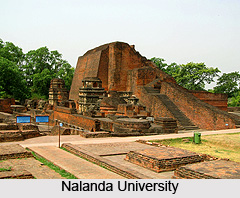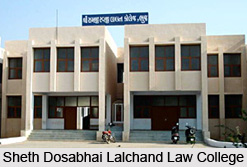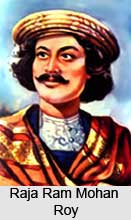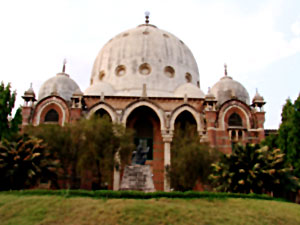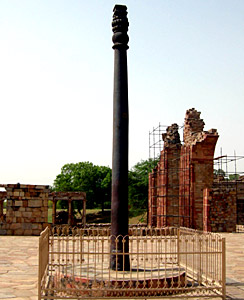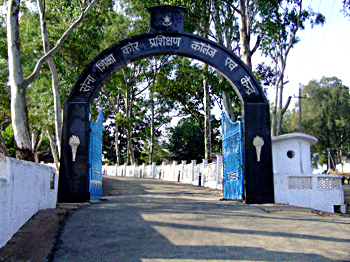Educational reforms of 1901-1904 were a significant move towards a proper channelised outlook towards Indian educational system. It had necessitated certain rules and regulations in the still-haphazard Indian education. To promote and further Indian students in their mission to stay educated and earn a decent job, the educational reforms by Lord Curzon was crucial.
On 2nd September 1901, Lord Curzon (1859-1925), Viceroy of India, convened a general conference, lasting for fifteen days in Shimla. Its attendees included: provincial Directors of Public Instruction and representatives from the principal universities of India, but no Indians. One hundred fifty-six resolutions emerged from this meeting with a particular call for the development of a Director-General of Education and a greater emphasis of technical education through the development of ten state scholarships.
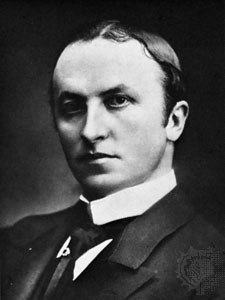 In January 1902, Lord Curzon created the post of Director-General of Education and appointed Hugh W. Orange (1866-1956) to the post. This position served as adviser to the Government of India on all educational matters. Orange held this post from until 1910. On 27th January in that year, the Government of India announced the establishment of the Indian Universities Commission to review the conditions and prospects of Indian universities. Thomas Raleigh (1850-1920), Law Member of the Viceroy`s Executive Council, was named the Education Commission`s Chairman.
In January 1902, Lord Curzon created the post of Director-General of Education and appointed Hugh W. Orange (1866-1956) to the post. This position served as adviser to the Government of India on all educational matters. Orange held this post from until 1910. On 27th January in that year, the Government of India announced the establishment of the Indian Universities Commission to review the conditions and prospects of Indian universities. Thomas Raleigh (1850-1920), Law Member of the Viceroy`s Executive Council, was named the Education Commission`s Chairman.
On 9th June, the report of the Universities Commission was submitted to Lord Curzon. Its recommendations included:
• Reduction in the size and charge of the university senates.
• No new universities should be initiated.
• The examination system should be revised and simplified.
• Minimum age of matriculation recommended as sixteen.
• Recognition to be granted to new schools only if certified by the Education Department.
• A minimum rate for college fees should be established.
• Second grade colleges should gradually be closed.
• Teaching of law in Arts colleges should be revised.
• Teaching of agricultural sciences should be encouraged.
• Quality and status of courses in the Indian classical languages should be improved.
On 2nd November 1903, Raleigh introduced the Universities Bill in the Imperial Legislative Council. It called for: better teaching, revised testing, closer inspections, an examination of the ties between the colleges and the affiliated university, statutory recognition of the syndicates, smaller reconstructed university senates and definition of the geographic limits of the universities.
The educational reforms of 1901-1904 were further taking a giant leap towards higher education in India, with a special view towards nationalised universities. On 21st March 1904, the Indian Universities Act passed into law, addressing issues raised in the report of the Universities Committee. The Act particularly strengthened the Government of India`s control of higher education in the five existing universities at Calcutta, Bombay, Madras, Lahore and Allahabad. The Act also provided 5 lakh rupees for five years to execute these changes.
In April 1905, the Government of India established the Agricultural Research Institute at Pusa, Bengal. From this establishment emerged the Central College of Agriculture which was given 130,000 pounds grant for agricultural research experiment, education and demonstrations.
However, educational reforms by Lord Curzon also adopted strict measures to curb down mutinous activities amongst natives. As such, on 28th July 1906, Lord Minto (1845-1914), Viceroy of India, accepted the offer of resignation of Sir Bampfylde Fuller (1854-1935), Lieutenant-Governor of Eastern Bengal and Assam. Fuller had recommended that the University of Calcutta should withdraw recognition or affiliation of two colleges having students who participated in boycotts and Swadeshi, or had demonstrated anti-British interests. He refused to consider any compromise and was sacked.
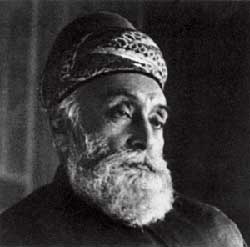 On 27th May 1909, in Bangalore, the Institute of Science received its legal sanction to begin operations. The Institute received its initial financial support from an endowment of 30 lakh rupees from Jamshetji Tata (1839-1904) who originally conceived of this post-graduate centre for research in chemistry and medicine. A decade in its planning, it also received considerable support from Lord Curzon.
On 27th May 1909, in Bangalore, the Institute of Science received its legal sanction to begin operations. The Institute received its initial financial support from an endowment of 30 lakh rupees from Jamshetji Tata (1839-1904) who originally conceived of this post-graduate centre for research in chemistry and medicine. A decade in its planning, it also received considerable support from Lord Curzon.
Within the years of 1910 to 1916, the expansion of medical education under the bourgeoning educational reforms included: a fifth medical establishment at Lucknow, a School of Tropical Medicine in Calcutta, a Bacteriology Laboratory near Bombay and the Lady Hardinge Medical College at Delhi for Women.
In 1910, the Government of India named Sir Harcourt Butler (1869-1938) as the first Member for Education, with a seat on the Viceroy`s Executive Council.
Within the period of 14th to 23rd June 1910, in Edinburgh, the World Missionary Conference reversed the subtle concept of mission to the educated in favour of direct evangelisation of the masses. Hence, Christian higher education fell to a secondary level of intent. In the month of December, Valentine Chirol (1852-1929), a correspondent for The Times, recommended to the British Government that they provide a gift of a crore of rupees to India for the development of technical education, in association with the Delhi Durbar of December 1911. He additionally suggested 500,000 pounds from cotton excise duty to be designated for technical education. The Secretary of State for India rejected these ideas. But the Government of India provided some grants and a onetime gift of 1,600,000 rupees.
The educational reforms formulated in the initial stages of 20th century, were awaiting to receive impetus from the educated nationalist classes amongst `natives`. On 16th March 1911, Gopal Krishna Gokhale (1866-1915) introduced in the Imperial Legislative Council his Elementary Education Bill. It called for compulsory education for boys aged between six to ten in selected areas, where elementary education had already existed. Despite the support of Lord Hardinge (1858-1944), Viceroy of India, Sir Harcourt Butler (1869-1938) Member for Education in Viceroy`s Council and Fleetwood Wilson (1850-1940), Finance member of Viceroy`s Council, the bill suffered defeat.
In July 1911, Sir Harcourt Butler, Member for Education, convened at Shimla a conference of Orientalists to discuss remedies for the neglect which had crept into Oriental studies. A subsequent October 1912 draft resolution submitted to the India Office proposed greater support for Oriental study. This thrust of interest in Oriental studies however faded in the turmoil of the First World War.
On 18th July, the India Office gave the Government of India its approval for the concept of establishing a communal university, i.e. Mahomadan University in Aligarh. From this new policy emerged the Banaras Hindu University in 1915. It is evident from such stimulated activities by the so-referred-to `Orientalists` that the British educational reformists were ceding to Indian pressure when education had taken a front seat.
In 1912, the Government of India broke new ground with the employment of forty-eight women to serve as inspectors of girls` schools. Each inspector received 16 rupees per day in compensation from the Education Department.
In 1913, the Government of India proposed two measures in the milieu of continued student violence in Bengal to bring the control of secondary education under governmental authority. The first called for the development of local governmental school boards to carry out a system of registering all secondary schools. The second proposal projected the construction of a system of school-leaving certificates by the Government of India. Concern of a violent Indian response to the measures and the distraction of the First World War delayed further consideration until the whole matter of education was transferred to the Provincial Governments as a part of the Montagu-Chelmsford Reforms in 1920.
In December 1915, passage of the Banaras Hindu University Act created a new communal university which subsumed that of Annie Besant`s Central Hindu College, established in 1898. The Government of India provided constitutional stipulations of great detail over the operation and administration of the university. The negotiations helped to clarify British policy, which proved helpful in planning for the new University of Dacca. The educational reforms which had been formulated in 1901-1904, had truly advanced to a sublime stage in the hands of natives, from where it was pondered that mere British hand was insufficient. Hence, from specific Indian educated accounts, rules and regulations in the reforms had given way to Indianisation.
In 1916, Sir Philip Hartog (1864-1947) played a key role in the founding of the School of Oriental Studies in association with the University of London. This institution has conducted significant research into all matters of Indian history and culture to the present date.
In September 1917, the Government of India named the Calcutta University Commission and its President. Dr. Michael Sadler (1861-1943), to investigate the state of higher education, particularly in Bengal. The Commission conducted its work in India from October 1917 to April 1919. Its final report indicated that the university`s governing bodies allowed lax in educational standards, offered liberal admissions and lacked intellectual discipline. It affirmed the continued use of a model of education at the University of Calcutta based on the characteristics of the universities of Oxford, Cambridge and London.
Within the period of 1919 1920, seven provincial legislatures passed Acts in support of compulsory primary education. The measures although failed in the rural areas due to severe lack of financial support, lack of teachers, poor or no facilities, inappropriate curriculum and a high student drop out rate.
In 1919, with the implementation of dyarchy, or the sharing of central powers with the provinces, control of education passed from the Government of India to provincial ministers and legislatures. This was a decisive move on the part of the government, as it was to later impress upon the intended educational reforms in every way possible.
The development of technical education from the times of 1920 fell mainly upon the Provincial Governments. Within the period of 1930 1931, the missionary societies of Great Britain and the United States named the Lindsay Commission to study the place and Impact of Christian higher education.
In 1930, issued by the Lindsay Commission, its report on Christian Higher Education analysed the place of education amidst the changed social, political and religious conditions of India. The Report indicated that Christian higher education had mainly helped the Indian Nationalists and their agenda of political reform and the defence of Hinduism; Christian higher education had suffered from large number of non-Christian teachers in higher education and the shortage of Indian Christian leaders. The Report held that the diminished stature and resources of the Christian colleges mirrored their diminished impact and found a divided mission over educational and religious curricular content. The Commission recommended a new mission for higher education in the preparation of future leaders for the Indian Church.
In 1935, with the opening of the Doon School at Dehra Dun, India gained what could be described as a "Public School" as the British knew it. With Indian funding and a British Headmaster, Arthur Foot (1901-1968), it proved highly successful with a dedicated emphasis on high quality of teaching and learning.
In 1941, founded by Scottish missionaries in 1883, Hislop College became the first educational institution to appoint an Indian principal, Dr. Moses, a graduate of Madras Christian College. In 1946, Union Theological College opened its gates through the united efforts of the Episcopalians, United Church of North India and the Baptists. The educational reforms of early 20th century, which had started its maiden journey through the hands of Lord Curzon, was culminating in the hand of Indian principals in public schools. The reforms had travelled full circle.
